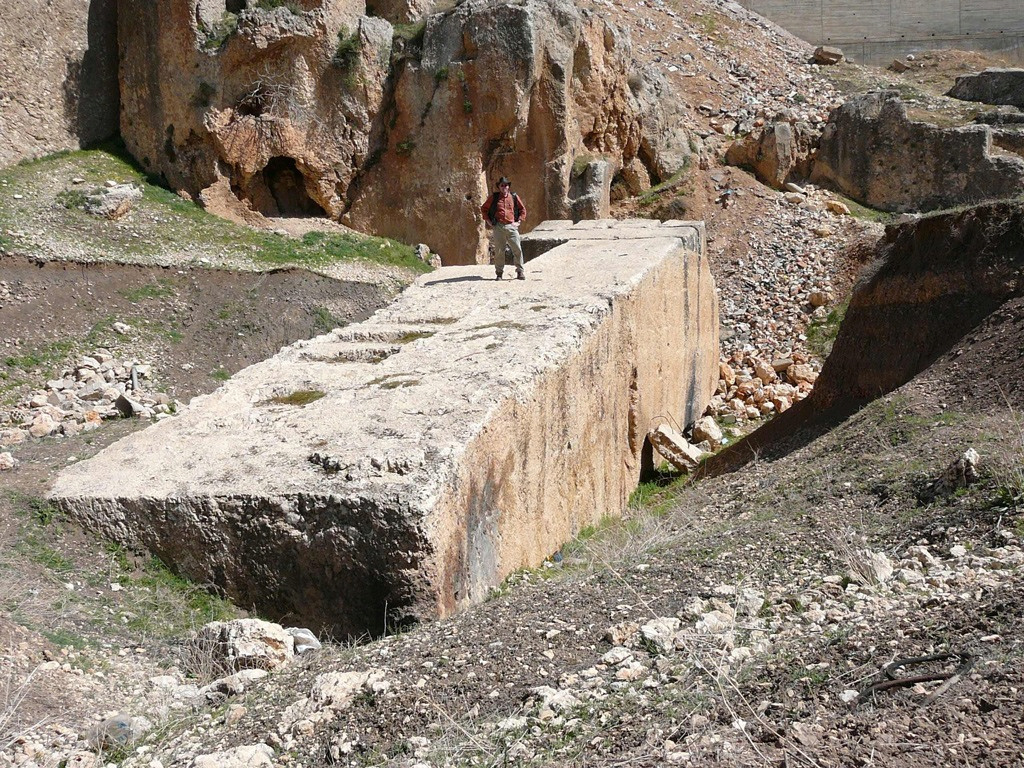the archaeological rocks of Baalbek, the largest carved rocks in human history
in the ancient world; Many civilizations have emerged that have been able to transport huge rocks over long distances using primitive techniques, starting from the erect rocks (Stonehenge) in Britain to (Machu Picchu), as these ancient peoples have always been discovering and developing ways to transport these huge rocks and boulders. from a place to another.
The Olmec people in Central America were able to transport giant stone heads, probably by using boats across rivers, while the Incas built great kingdoms on the tops of the mountains by huge rocks with a very precise arrangement and proportion, each of which was brought over distances of tens of kilometers. The people of Easter Island have also carved and transported some of the largest rock carvings created by man throughout history.
However, the largest rock carved and polished by man discovered so far has not been found in any of these previous places, but was found in the Lebanese city of Baalbek, in the ruins of a city known one day as the city (Heliopolis), whose name means “the city of the sun.” .
Temple (Jupiter Baal) in Baalbek, Lebanon.Photo: Khalid Albaih/Flickr
At the base of the ruins of the Temple (Jupiter Baal), there are three gigantic rocks known collectively as “the Trilithon rocks”, and the weight of each of them is estimated at more than 750 tons. The construction of the huge Roman Temple of Jupiter began around 27 BC, and while most researchers agree that the rocks were polished and cut by the Romans, there is some evidence that the Trilithon may predate the Romans’ presence in the Middle East. . In fact, the presence of these rocks there may precede the presence of Alexander the Great, who founded the city (Heliopolis) in the year 334 BC.
The stairs leading to the entrance to the temple (Jupiter Baal).Photo: Steven Damron/Flickr
Whether they were polished and carved by Roman builders or groups of other peoples, one seems to have figured out a way to move these giant boulders and rocks from a quarry and move them over a distance of several kilometers, then raise them on the base of a smaller group of rock.
In addition to the Trilithon, there is a fourth boulder inside the temple, which is considered the largest rock that has been polished by humans throughout history. This rock is known as “The Pregnant Stone,” and it weighs about 1,200 tons—the equivalent of the weight of three Boeing 747s—.
The Pregnant Stone, the largest of the trilithon rocks in Baalbek, and the largest stone carved by man in history.Photo: Frode Bjorshol/Flickr
A man stands over the Pregnant Stone from a different angle.
Apparently, this enormous weight proved itself much greater than man could then transport, so it was left in the place where it was polished, and is now an enormous rectangular rock jutting out of the ground.
It remains a question how the Roman engineers (or any people who were behind the carving and polishing of these rocks) thought that they might be able to move and move a rock of this huge size.
One of the Trilithon's rocks in Solomon's Wall.
source :websites







